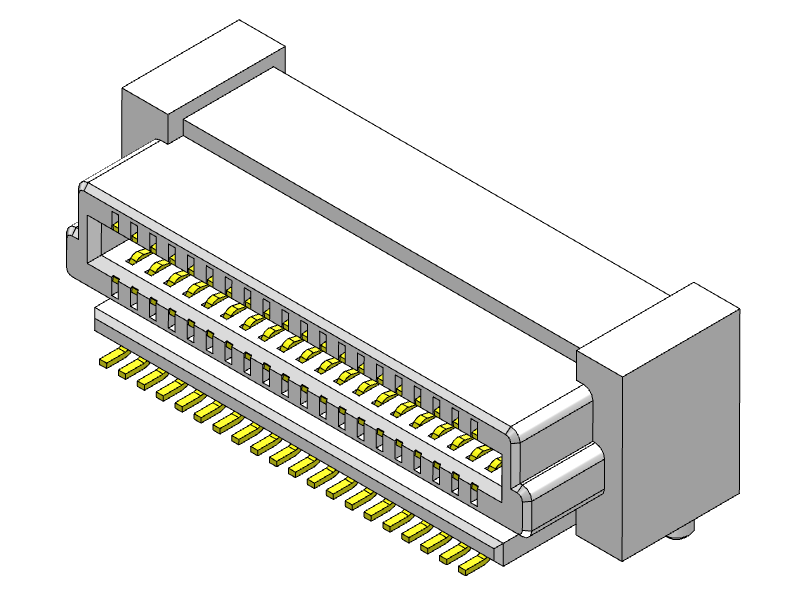
Application characteristics of automotive connectors
Automotive connectors are a component that electronic engineering technicians often touch. Its function is very simple: it sets up a bridge of communication between the blocked or isolated circuits in the circuit, so that the current flows and the circuit realizes the predetermined function. The form and structure of automotive connectors are ever-changing. They are mainly composed of four basic structural components, namely: contacts, shells (depending on the variety), insulators, and accessories. In the industry, it is usually also called sheath, connector, plastic shell.



1. There are nearly 100 types of connectors used in general cars, and there are hundreds of connectors used in a single model. As people have higher and higher requirements for safety, environmental protection, comfort, and intelligence in automobiles, the application of automotive electronic products is increasing, which will make the number of automotive connector applications increase.
2. Contact piece It is the core part of the car connector to complete the electrical connection function. Generally, a contact pair is composed of a male contact piece and a female contact piece, and the electrical connection is completed by the insertion of the female contact piece and the male contact piece. The male contact is a rigid part, and its shape is cylindrical (round pin), square column (square pin) or flat (insert). The male contacts are generally made of brass and phosphor bronze. The female contact piece is the jack, which is the key part of the contact pair. It relies on the elastic structure to elastically deform when it is inserted into the pin to generate elastic force to form close contact with the male contact piece to complete the connection. There are many types of jack structures, such as cylindrical (splitting, shrinking), tuning fork, cantilever beam (longitudinal slotting), folding type (longitudinal slotting, 9-shaped), box-shaped (square jack) and Hyperboloid spring jacks, etc.
3. The shell, also known as the shell (shell), is the outer cover of the automotive connector. It provides mechanical protection for the built-in insulating mounting plate and pins, and provides alignment when the plug and socket are inserted, thereby fixing the connector to the connector. on the device. The insulator is also often referred to as the base or the mounting plate of the automobile connector. Its function is to arrange the contacts in the required position and spacing, and to ensure the contact between the contacts and between the contacts and the shell. insulation properties. Good insulation resistance, withstand voltage performance and ease of processing are the basic requirements for selecting insulating materials to be processed into insulators.
4. Accessories are divided into structural accessories and installation accessories. Structural accessories such as retaining rings, positioning keys, positioning pins, guide pins, coupling rings, cable clamps, sealing rings, gaskets, etc. Mounting accessories such as screws, nuts, screws, spring rings, etc. Most of the accessories have standard parts and general parts. It is these four basic structural components that enable automotive connectors to act as a bridge and operate stably.
5. When we choose connectors, we first need to consider the particularity of automotive connectors. Automotive connectors are also based on their own standards set by different vehicle companies. The basic international standard is ISO 8092-2005, which is divided into four parts:
(1) Dimensions and special requirements of ISO 8092.1 single-wire blade connectors
(2) ISO 8092.2 definitions, test methods and general performance requirements
(3) Dimensions and special requirements of ISO 8092.3 multi-wire blade connectors
(4) ISO 8092.4 Cylindrical connectors for single and multi-wire mating - Dimensions and special requirements
Since the international standard is the result of a game, many things are determined by the manufacturer in a basic direction, but the test parameters, test items and test methods can no longer meet the development status of the connector, so it is basically divided into three regional standards. Represents some of the requirements of the American, European and Japanese automotive industries.
1) The connector performance specification USCAR-2 formulated by the American Society of Automotive Engineers can represent the development status of the connector in terms of test parameters and test items, and is more operational in terms of test methods. Standards such as the general GMW3191 and Fiat's 7-Z8260 are based on USCAR-2.
2) JASO D605-1996 Automotive electronic connector: The Japan Automobile Manufacturers Association has also formulated a basic connector standard based on the comprehensive needs of Japanese car companies
3) LV 124 Test items, test conditions and test requirements for automotive electrical and electronic components under 3.5 tons, this supply specification is provided by the representatives of the car manufacturers Audi AG, BMW AG, Daimler AG, Porsche AG and Volkswagen AG It was prepared as a joint enterprise standard representing the German automotive industry.